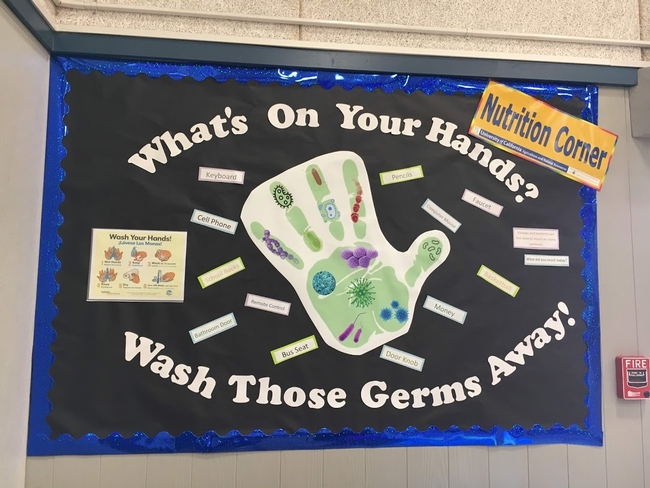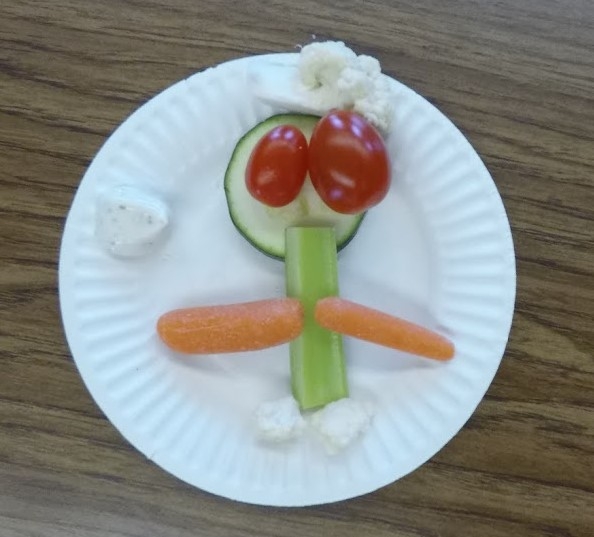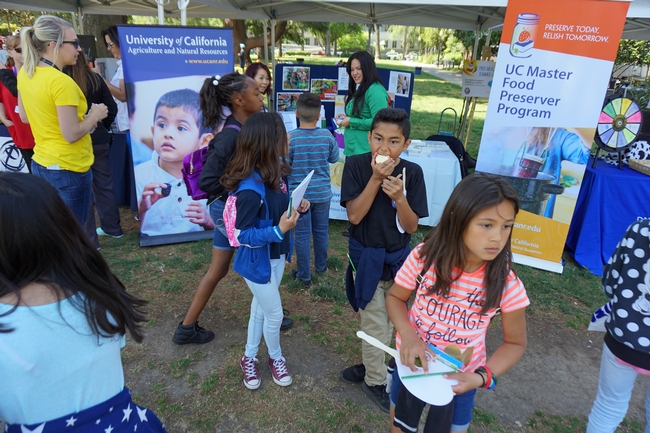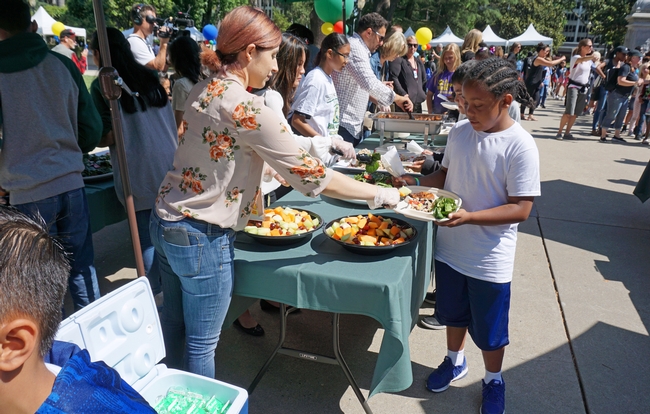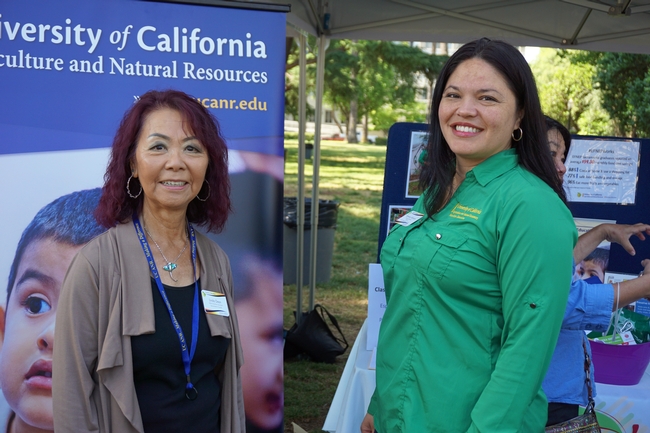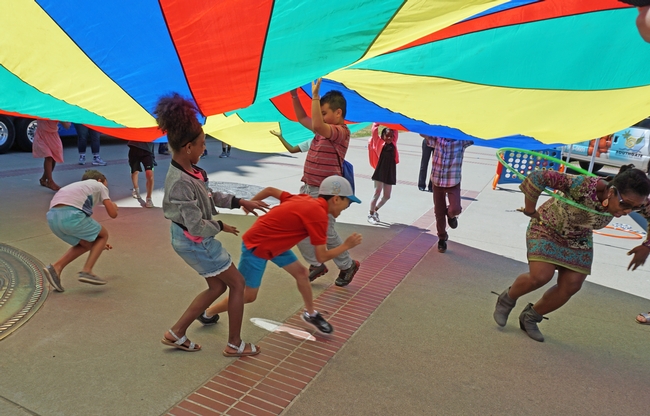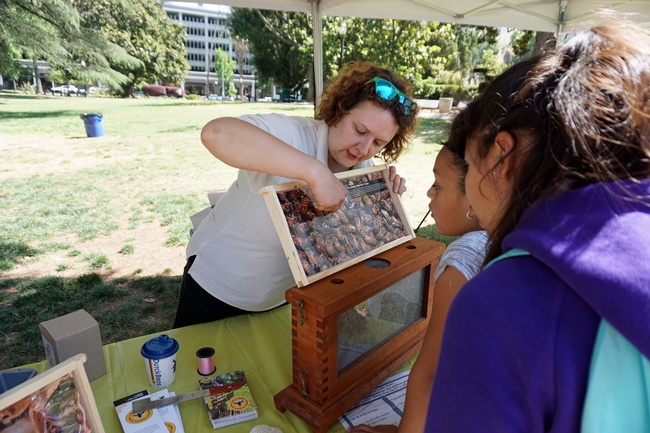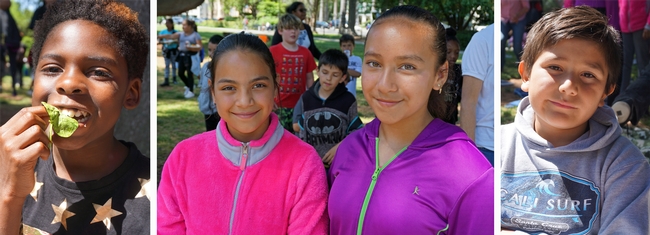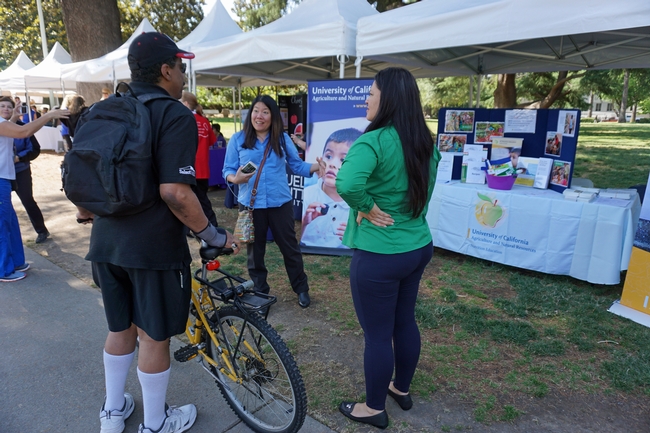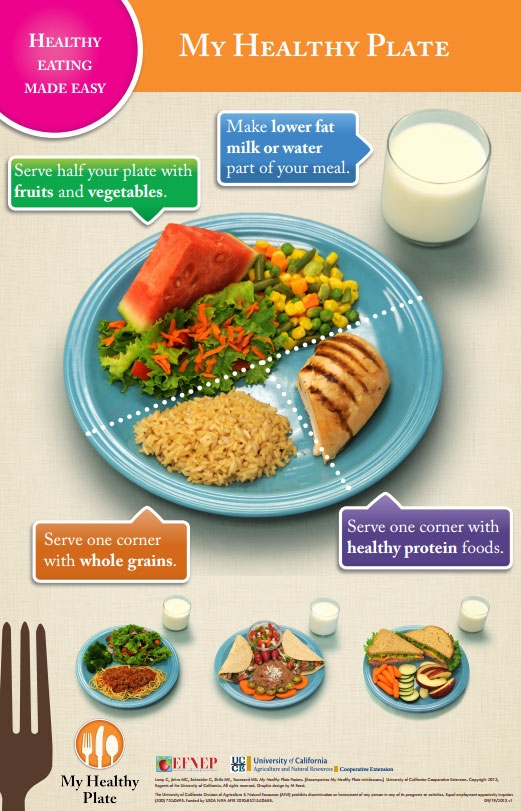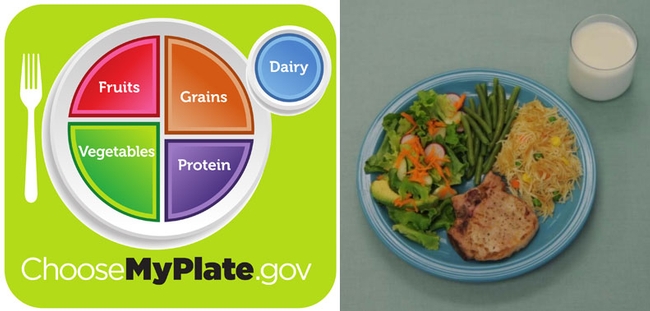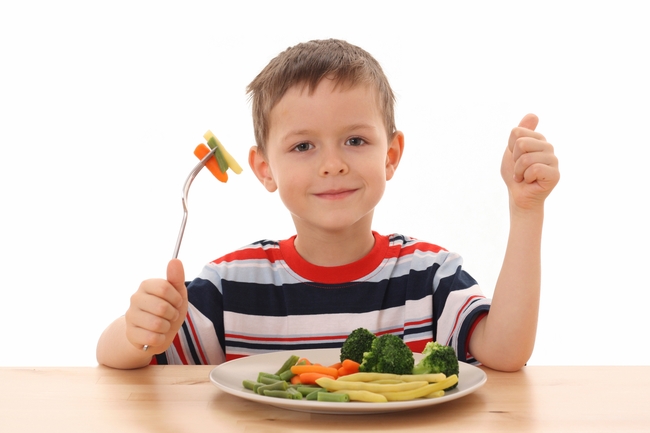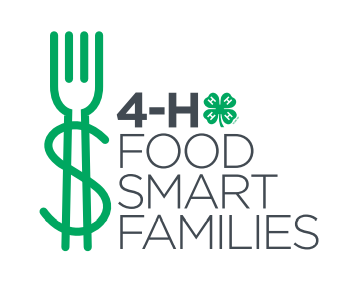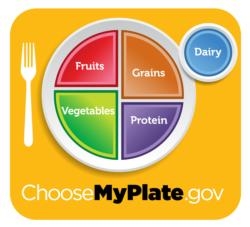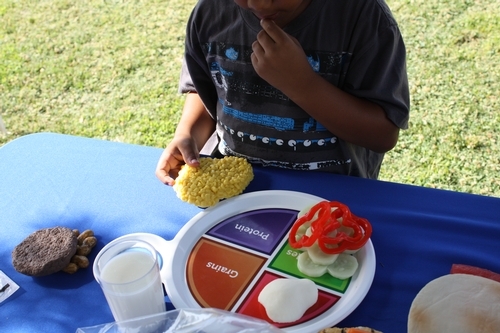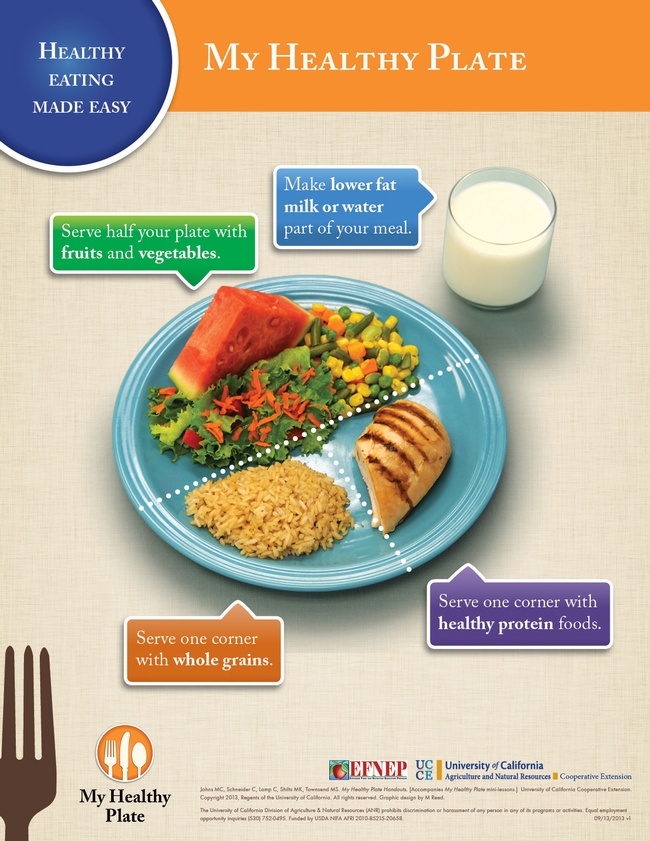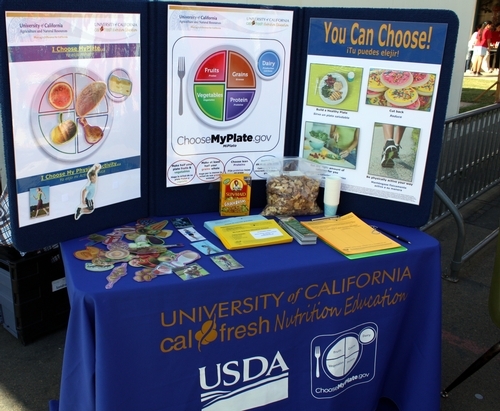Posts Tagged: EFNEP
Creating family home cooking memories with love and gratitude
Growing up in a traditional Asian Indian household, home cooking was a part of the daily routine and a cultural practice. At the time, acquiring cooking knowledge and skills was an expectation and considered normal. When I moved to the United States, I added new knowledge about diverse cultural values and norms surrounding food and home cooking practices.
Today, with millions of people nationwide facing stay-at-home and social distancing guidelines, home cooking has found new meaning for many families. Navigating through this new normal, I feel blessed to have the cooking knowledge and skills that empower me to cook basic pantry food items into diverse cultural food recipes from across the world. Thanks to my family for keeping the passion of home cooking alive.
As the UC Cooperative Extension nutrition, family, and consumer sciences advisor and a researcher trying to understand and identify strategies to support healthy lifestyle habits among children and families, I feel this commitment has never been stronger than it is right now. I decided to meaningfully inform the ways families can work together with children in the kitchen. In this process, I examined the strategies used by UCCE nutrition education programs of Tulare and Kings counties in the past year, along with current research and best practices that promote home cooking, age-appropriate kitchen tasks, and meal preparation activities.
What is cooking and why it matters?
Cooking is a learned skill that is broadly defined as the ability and capacity to prepare meals. Cooking at home is a practice that encompasses a range of activities to include nutrition and age-appropriate kitchen tasks from food planning, preparation, safety, consumption and much more. Children can acquire cooking skills at home with adult guidance and supervision. There are many benefits of cooking at home.
Cooking at home improves health and well-being
Families that prepare meals at home eat a healthier diet. Studies have reported more fruit and vegetable consumption and low consumption of convenience and processed foods among families who cook at home compared to families who cook irregularly or not at all. A study reported that adolescents with cooking ability indicated better nutritional and mental health and stronger family connections. Among adults, cooking at home has indicated improvements in health status, dietary intake, self-efficacy, self-esteem, mood and affect.
Cooking at home strengthens family resource management
Food resource management involves meal planning, shopping, and budgeting. Studies have shown preparing meals at home saves time and money and helps families eat healthy on a budget.
Cooking at home increases family mealtimes
Having basic cooking skills set the foundation for family mealtimes. Research shows when families cook at home, they are more likely to eat at home most days of the week, make healthier food choices, and save money.
Cooking at home promotes family cultural tradition
Families pass on their cultural tradition when they include children in every aspect of the meal preparation, from choosing the food menu and ingredients, to setting the table to making the meal, talking and eating together. Research shows such practices may differ from family to family, however, it creates lifelong knowledge and memories.
Cooking at home contributes to lifelong healthy habits and life skills
Cooking together as a family helps children learn useful life skills of reading, teamwork, planning and organization, communication, problem-solving, creativity, imagination, cleanliness, and gratitude. Children can apply math, science, nutrition, culinary, and geography lessons to understand where the food comes from, how to read a recipe, how to measure ingredients, healthy vs. unhealthy foods, foods from around the world, seasonal foods, nutrition aspects of the food and much more.
Promoting healthy families and communities through UC Cooperative Extension
The University of California Cooperative Extension administers CalFresh Healthy Living, UC and the Expanded Food & Nutrition Education Program in Tulare and Kings counties
Funded by the U.S. Department of Agriculture, nutrition education is an integral component of these programs. Increasingly in recent years, there is a focus on improving lifelong practical skills using age-appropriate learning approaches.
In the past year, the UCCE nutrition programs in Tulare and Kings counties have empowered children, youth, adults, and families with knowledge and skills to make the healthy choice the easy choice.
Participants learned about handwashing and food safety, age-appropriate cooking basics, growing a vegetable garden, reading a recipe, eating healthy from five food groups, healthy and seasonal foods. Through food demonstrations and taste tests, participants enjoyed foods from all food groups, including new fruits and vegetables, and showed a willingness to try them at home.
Additionally, adult learning also included food planning and management, selection, preparation, cooking, and eating on a budget.
How can families engage children in age-appropriate home cooking activities?
Now is the time to create family home cooking memories with love and gratitude
Try a few of the activities listed below, and set goals to adopt small healthy living changes. Soon, you'll be proud and happy to see your children pick up these skills and habits.
Age-appropriate kitchen tasks. Children are great helpers. Parents can delegate and guide children with Age-Appropriate Kitchen Tasks . Age-appropriate tasks are recommended based on what children can do at each age. Effective parental practices can help children stay healthy and safe (Child Development Milestones & Parenting).
Cooking appliances, tools and accessories.Be a kitchen tour guide to your children and help them get to know the kitchen layout and appliances. Show them cooking tools and accessories that you frequently use in the kitchen. Provide age-appropriate cooking tools to encourage children to get involved in the kitchen.
Handwashing. Help children understand the importance of washing hands before, during, and after handling food, cooking, and eating. Help children develop handwashing habits by following Five Steps to Handwashing. Handwashing can be a fun family activity.
Food safety. Explain to children the science behind food handling, cooking, and storage using guidelines about Food Safety in Your Kitchen and Food Safety Fun Learning Family Activities. To get guidance on safe handling, preparation, and storage of food and beverage items, download Foodkeeper App.
Food menu planning. Involve children in Food Planning Activities & Resources. Create a Sample Two-Week Menuto minimize trips to grocery stores. Ask children to help you create a family food menu. During grocery shopping, fill your cart with healthy options and consider shelf-stable and budget-friendly items from each food group with Food Groups Tip for Every Aisle.
Cooking with new foods, herbs and spices.Walk the talk about the importance of eating from five food groups and drinking water instead of sugar-sweetened beverages by doing so yourself. When creating a food menu and food recipes, include foods from five food groups - fruits, vegetables, proteins, grains and dairy from MyPlate and Seasonal Produce Guide. Add flavor to your food with Herbs & Spices. You can also Grow Your Own Herbs & Spices Indoors .
Food recipe cookbooks. Involve children in creating healthy food recipe cookbooks for breakfast, snacks, lunch, appetizers, and dinner. Think about building traditional family food recipes, food recipes from around the world or by culture, quick and easy food recipes, cooking with herbs, slow-cooker recipes, and much more. Family friendly recipe ideas can be found at MyPlate Kitchen, Healthy Recipes from the Whitehouse to You, Meeting Your MyPlate Goals On A Budget, Healthy Eating on a Budget Cookbook.
Food demonstration and taste test. Food demonstration and taste test can be a fun family kitchen activity during weekends. Encourage children to create a fun recipe to cook, and ask them to use their five senses to describe the flavors, ingredients and the food used in the recipe. Try to blend the food from many cultures to create new recipes. Share family food stories with children to keep the family tradition alive.
Family mealtimes. Family mealtime is an opportunity to eat, talk, connect, communicate, and learn. Visit MyPlatePlan to learn what and how much to eat within calorie allowance. Eating together as a family gives the children an opportunity to learn and practice their table manners, social and communication skills.
Reduce food waste. Family meal preparation time is a great opportunity to educate children about how to Recycle & Compost food waste. Recycling food helps save money and reduces the amount of food going to waste.
Food- and kitchen-related COVID-19 informational resources.The USDA Food and Nutrition Service and the Academy of Nutrition and Dietetics has useful nutrition and food safety tips and activities for families managing the challenging conditions of the COVID-19 outbreak. Find these organizations here:
- USDA Food & Nutrition Service Information Link
- Academy of Nutrition & Dietetics Link
- Videos on Kitchen Topics
- Social Media Kitchen Related Topics for Families
- Games, Activities, & Tip Sheets
A Sacramento coalition wants to serve 1 million healthy meals to children this summer
When school's out, many children who live in poverty no longer eat nutritious meals like they do during school as part of the free and reduced-cost school lunch program.
UC Agriculture and Natural Resources' Expanded Food and Nutrition Education Program (EFNEP) in Sacramento County has joined a coalition to promote the summer meals program, which is aiming to serve one million meals during summer 2018.
The coalition was formed by State Sen. Richard Pan, who invited Sacramento students to the State Capitol for a picnic May 22 launching the “Million Meals Summer.”
“In Sacramento County, on average 1.9 million free or reduced-price lunches are served each month while school is in session,” said Sen. Pan. “For so many of these children, school meals are their primary source of nutrition.”
In the summertime, the number of lunches served drops to less than 10 percent of the school-year number.
“Over the last couple of years, my office has worked with a growing number of organizations to help close the gap of child nutrition,” Sen. Pan said.
At the picnic, Sen. Pan, a pediatrician, reminded the children that eating healthy through the summer will get them ready to learn when school starts again.
Sen. Pan said Kim Frinzel, associate director of the California Department of Education nutrition services division, is leading the effort to set up sufficient meal sites and encourage children to attend.
“You get a great meal,” Frinzel told the students. “You get to hang out with your friends. And you get to participate in fun activities. Clap if you will help us serve a million meals.”
Vanessa Kenyon, EFNEP program supervisor for Sacramento and San Joaquin counties, said EFNEP will provide nutrition education training for Samuel Merritt University nurses-in-training.
“Summer meals are provided at 140 sites in Sacramento County. If the children stick around after eating, they can take part in enrichment programs. The student nurses will fulfill a portion of their service hours by sharing nutrition education resources and activities at the meal sites,” Kenyon said.
The UC EFNEP program, which serves 24 counties in California, assists limited-resource families gain the knowledge and skills to choose nutritionally sound diets and improve well-being.
The United Way California Capital Region heads the coalition of community, business and state partners supporting the Million Meals Summer in Sacramento County.
UC’s My Healthy Plate article named 'paper of the year'
The USDA's colorful MyPlate icon clearly shows many Americans how to formulate healthy meals for their families with the proper proportions of fruits and vegetables, protein foods, grains and dairy products. However, UC Cooperative Extension nutrition educators in Central California discovered that the infographic was too abstract for local low-literate families. They embarked on a years-long effort to translate the shapes and colors into a series pictures showing plates filled with healthful, real food.
The concept clicked, so county and campus-based researchers joined together to document the effectiveness of a new curriculum shaped around pictures of properly portioned plates of food to share with nutrition educators around the nation and world. They wrote an article, A Picture is worth a thousand words: Customizing MyPlate for low-literate, low-income families in 4 steps, which was published in the July-August 2015 issue of the Journal of Nutrition Education and Behavior. In 2016, the article was named the “paper of the year” in a category of articles and research programs called “great educational material” (GEM).
In the paper, the researchers shared a four-step process for creating a set of meal photographs that will resonate with families in different communities.
The four steps are:
- Review food patterns and determine meal combinations – This is done by asking clientele what foods they recently fed their families. Once the foods are identified, they can be modified to meet MyPlate recommendations.
- Test meals and take final photographs – Prepare the meals, take photos and test the photos with the target audience.
- Develop and test education messages to accompany photos – Messages should have few words, use family vocabulary and be written for a low-literacy audience.
- Create and test education materials – After the suggested materials are created, they should be tested with the target audience.
The UC Cooperative Extension Expanded Food and Nutrition Education Program (EFNEP) is using the “My Healthy Plate” materials in reaching out to low-literacy and low-income families in California.
The authors of the Journal of Nutrition Education and Behavior paper of the year are Mical Shilts researcher at UC Davis; Margaret Johns, nutrition, family and consumer science advisor in Kern County; Cathi Lamp, emeritus nutrition, family and consumer sciences advisor in Tulare County; Connie Schneider, emeritus Youth, Families and Communities director for UC Agriculture and Natural Resources; and Marilyn Townsend, UC Cooperative Extension nutrition education specialist in the Department of Nutrition at UC Davis.
My Healthy Plate education materials are available at http://townsendlab.ucdavis.edu.
Empowering California youth through food smart families
We are what we eat. Unfortunately, we don't always make the best food choices. Sometimes it's simply a lack of will power. In communities struggling with high poverty rates, it's often the result of low incomes and limited food options. Dangerously high obesity rates, especially among youth, are a major public health concern in the United States.
The health of California youth reflects this disturbing national trend. To address the challenge of childhood obesity statewide, the California 4-H Food Smart Families program will be implemented at four sites in Fresno, Orange, Sutter-Yuba and Tulare counties this year. Additional UC partners will include the Expanded Food and Nutrition Education Program (EFNEP) and CalFresh.
Youth need to increase consumption of dark green veggies and whole grains, and decrease intake of sugar and saturated fats. The objective of California 4-H Food Smart Families is to increase knowledge and create behavior change related to nutrition, cooking, gardening, physical activity and food preparation. The program engages youth 8 to 12 years old and teens in 4-H Healthy Living programming. Youth will be directly reached through lessons delivered at after-school sites, low-resource elementary schools and organized field days at four UC Agriculture and Natural Resources Research and Extension Centers (REC): Kearney REC in Parlier, South Coast REC in Irvine, Sierra Foothill REC in Browns Valley and Lindcove REC in Exeter. The program is structured around positive youth development curricula and practices which provide an intensive engagement of underserved children, teens, families and other stakeholders. Local 4-H teens will be recruited and trained to deliver programs and assume leadership roles.
The National 4-H Council partnered with the ConAgra Food Foundation to launch the national 4-H Food Smart Families program in 2014. ConAgra sponsored funding to award grants to five states for program implementation. This year, in addition to the original five states, California and Louisiana were awarded grants as new participants. Inclusion of the UC Research and Extension Centers in the California program is a new model that organizers hope will be replicated elsewhere. Youth and families who visit the centers will witness first-hand not only how food is grown, but also the science behind it. Center specific lessons may be added to highlight the unique nature of local agriculture and natural resources and the food crops cultivated and studied at each center.
Programming at California sites will get underway this fall and will continue through the school year. Look for more exciting California 4-H Food Smart Families news in the coming months as programming and activities kick into high gear.
Author: Roberta Barton
Picture this: UCCE focuses on healthy meals for Healthy Weight Week (Jan. 18-24)
Photos of sumptuous dishes are nearly as numerous as cat photos on social media. To sharpen people's focus on healthful eating, UC Cooperative Extension nutrition experts are using photos of food.
In 2011, the U.S. Department of Agriculture unveiled a new food graphic, MyPlate, to remind consumers to choose healthier foods. Work by Cooperative Extension in California that began years earlier influenced the adoption of MyPlate by USDA. Nutrition educators in California began using a plate graphic with USDA's My Pyramid several years ago in a research project with Expanded Food and Nutrition Education Program (EFNEP) and UC CalFresh Nutrition Education Program participants. While evaluating the use of their graphic, which was very similar to USDA's MyPlate, UC Cooperative Extension nutrition advisors found that a graphic depiction such as the one USDA is using for MyPlate is abstract for many families.
“We discovered that our clients need to see photos showing real food combinations in order to apply the MyPlate message to real food choices,” said Cathi Lamp, UC Cooperative Extension nutrition advisor. “They prefer to learn by viewing photographs with foods and meals they eat to see how it works and how they can implement the guide in their lives.”
In a project with more than 200 Latino consumers participating, the UCCE nutrition advisors learned which foods Latina, African American and other women would serve their families. Lamp and her colleagues developed materials with photographs of the preferred foods for nutrition education.
They evaluated the behavior of consumers who were trained with the revised Plan, Shop, Save and Cook curriculum with photos of food and compared it with the results of the original version of the lessons.
“We found that the group receiving the revised Plan, Shop, Save and Cook and MyPlate materials reported the greatest change in the frequency of using MyPlate to make food choices, after considering differences among groups in initial behaviors and participant characteristics,” Lamp said.
Given the success of the photographs, UC Cooperative Extension created “My Healthy Plate” posters. Photographs of healthful food served on plates appear in all the EFNEP and UC CalFresh nutrition education materials, including the revised Plan, Shop, Save and Cook curriculum.
“Everybody enjoys looking at pictures of foods,” said Lamp. “So what we have now in our nutrition classes are lots of photographs of healthy examples.”
To listen to an interview with Cathi Lamp about My Healthy Plate in Spanish, visit Enseñando a comer ‘con sabor latino' con MiPlato at http://ucanr.edu/sites/Spanish/Noticias/radio/?uid=5983&ds=199.
For more than 100 years, the University of California Cooperative Extension researchers and educators have been drawing on local expertise to conduct agricultural, environmental, economic, youth development and nutrition research that helps California thrive. UC Cooperative Extension is part of the University of California's systemwide Division of Agriculture and Natural Resources. Learn more at ucanr.edu.



